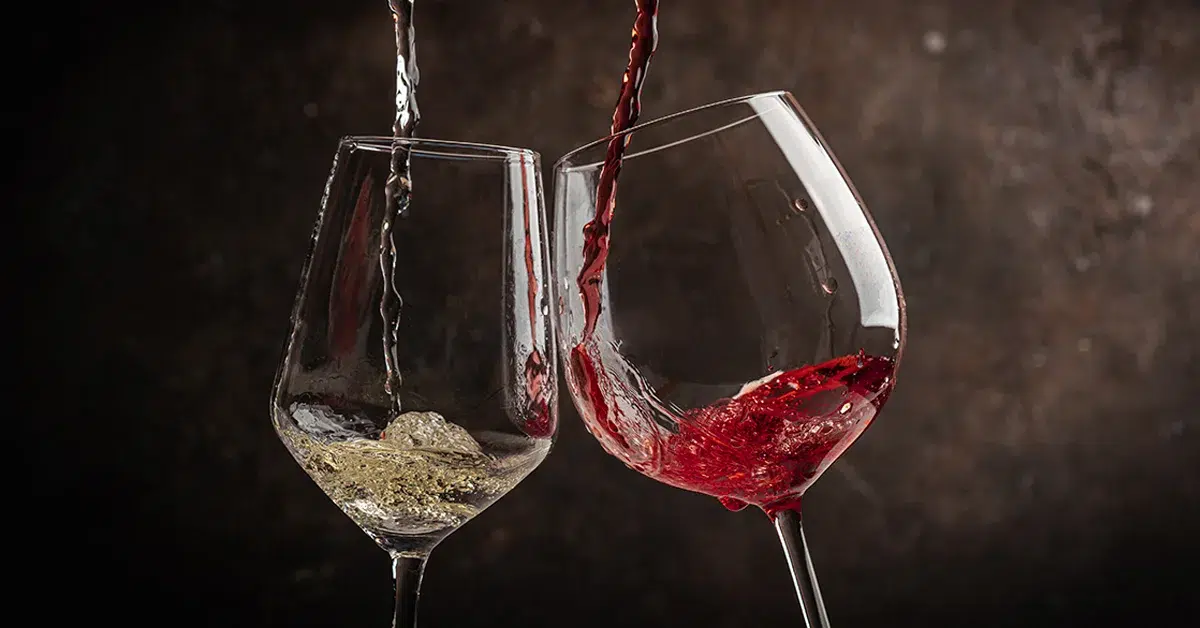Cooking with wine can elevate a dish, adding depth, complexity, and layers of flavor. The right wine can enhance the overall taste, while a poor choice may overwhelm or clash with the dish. Whether you’re braising meat, making a sauce, or even baking, choosing the right wine for cooking is key.
But unlike drinking wine, which is all about personal preference, selecting wine for cooking involves a more thoughtful process to match the wine’s characteristics with your dish.
In this guide, we’ll explore the fundamentals of selecting wine for cooking, from the best types of wines for various dishes to tips on how to avoid common mistakes. Understanding how wine interacts with heat, acid, and fat will help you choose a bottle that complements your meal perfectly.
1. Cooking Wine vs. Drinking Wine
First and foremost, it’s important to differentiate between cooking wine and the wine you’d drink. Cooking wine is often sold in grocery stores and is designed specifically for culinary use. However, these wines typically contain added salt, preservatives, and other chemicals that can affect the flavor of your dish, often making them a poor choice for cooking.
Instead, use a wine that you would drink yourself. While it doesn’t need to be the most expensive bottle, it should still be of decent quality. Cooking wine evaporates as it heats, leaving behind concentrated flavors, so a wine that tastes good on its own will contribute to a more flavorful dish.
2. Types of Wine to Use for Cooking
While you can use a variety of wines for cooking, there are certain guidelines that can help you choose the best one for your recipe.
Red Wines for Cooking
Red wines are often used in recipes that involve meats like beef, lamb, or chicken. Their tannins and rich fruit flavors enhance the savory qualities of the dish.
-
Best Uses: Red wines are great for stews, braises, marinades, and sauces, especially those with bold, hearty flavors.
-
What to Look For: Choose a dry, full-bodied red with good acidity. Common choices include Cabernet Sauvignon, Merlot, Syrah, Zinfandel, or Pinot Noir. A good red wine for cooking should complement the richness of meats or sauces without overpowering them.
Example Dishes:
-
Beef Bourguignon
-
Coq au Vin
-
Red wine sauce for steaks
-
White Wines for Cooking
White wines are typically lighter and more acidic, making them a great choice for lighter dishes such as chicken, seafood, and pasta. They help balance out rich or creamy dishes and can bring a refreshing brightness.
-
Best Uses: White wine is often used for seafood dishes, poultry, pasta sauces, and risottos. It also works well in delicate cream sauces.
-
What to Look For: A dry, crisp white wine with moderate acidity works best. Consider varieties like Sauvignon Blanc, Chardonnay, Pinot Grigio, or Riesling (for sweeter dishes).
Example Dishes:
-
Shrimp scampi
-
Chicken piccata
-
Creamy white wine pasta sauce
-
Fortified Wines (Sherry, Marsala, Port)
Fortified wines like Sherry, Marsala, and Port are richer and more complex due to their higher alcohol content. These wines are often used in sauces, gravies, and dessert recipes.
-
Best Uses: These wines are perfect for making rich sauces, particularly for meats like pork, veal, or duck. They’re also fantastic in desserts like tiramisu or fruit-based sauces.
-
What to Look For: Sweet and dry versions are both useful depending on the dish. Dry Sherry is great for savory dishes, while sweet Marsala or Port is ideal for desserts or sweeter sauces.
Example Dishes:
-
Veal Marsala
-
Chicken with Sherry sauce
-
Port wine reduction sauce
-
Rosé Wines for Cooking
Rosé wines, which are made from red grapes but with less skin contact, can bring a lighter, fruitier flavor to dishes. They offer a middle ground between red and white wines.
-
Best Uses: Rosé is great for salads, seafood dishes, and lighter meats like turkey or chicken. It also pairs well with Mediterranean cuisine.
-
What to Look For: A dry rosé with crisp acidity works well in cooking, as it can add balance and a touch of fruitiness.
Example Dishes:
-
Grilled chicken with rosé sauce
-
Mediterranean seafood pasta
-
Rosé wine vinaigrette
-
3. Matching Wine with the Dish
When choosing wine for cooking, the key is to match the wine to the flavor profile of the dish. Here are some general guidelines:
-
Rich or fatty dishes (like braised meats, stews, or creamy sauces): Use a full-bodied red or a rich white wine with good acidity to cut through the fat. Wines like Cabernet Sauvignon, Merlot, Chardonnay, or a dry Sherry are great choices.
-
Light and delicate dishes (such as seafood or chicken): Choose a wine that has fresh acidity and subtle flavors. Opt for dry white wines like Sauvignon Blanc, Pinot Grigio, or even a dry rosé.
-
Sweet or fruity dishes (like fruit sauces or desserts): A sweeter wine, such as Port, Marsala, or even a sweet Riesling, complements the sweetness of the dish.
4. The Role of Wine in Cooking
Wine serves several roles in cooking: it adds flavor, balances acidity, and can also tenderize meat. Here’s how:
-
Flavor Enhancement: Wine enhances and deepens the flavors of the dish. A red wine sauce, for example, adds richness, while a splash of white wine can lift a creamy sauce with its acidity.
-
Acidity: Wine’s natural acidity helps balance fatty or rich ingredients, providing brightness and contrast. It’s especially useful in creamy or butter-heavy sauces.
-
Tenderizing Meat: The tannins in red wine can help break down proteins in meat, making them more tender. Wine-based marinades are a great way to add flavor and improve the texture of meats before cooking.
5. Tips for Cooking with Wine
-
Cook with wine you enjoy drinking: Since the flavors of the wine concentrate during cooking, choose one that you enjoy sipping on its own.
-
Don’t overcook the wine: Allow wine to cook for a few minutes to evaporate the alcohol and concentrate its flavors, but don’t let it boil away completely. This can leave a harsh, acidic taste.
-
Balance the wine with other ingredients: Don’t rely solely on wine for flavor. Incorporate herbs, spices, and other liquids to create a well-rounded dish.

-
Use wine sparingly: Wine should enhance, not dominate, the flavors of the dish. Add it in moderation and adjust as necessary.
6. Avoiding Common Mistakes
-
Using cheap cooking wine: Cheap, overly salty cooking wines can impart an off-putting flavor to your dish. Opt for something drinkable.
-
Using wine that’s too old: While wine doesn’t spoil as quickly as some ingredients, using wine that’s gone bad (e.g., oxidized or vinegar-like) will negatively affect your dish.
-
Forgetting the wine’s role in the dish: Wine is meant to enhance and balance. Don’t rely on it as the primary flavor. Always balance it with other ingredients.
Conclusion: Wine as an Ingredient, Not Just a Beverage
Choosing wine for cooking doesn’t have to be intimidating. By following these guidelines and understanding how wine works with food, you can easily elevate your dishes. Whether you’re braising a roast, making a pasta sauce, or preparing a decadent dessert, the right wine can add a layer of complexity and depth that’s hard to achieve otherwise.
So, next time you’re in the kitchen, consider reaching for a bottle of wine—both as a flavorful ingredient and as a drink to enjoy alongside your meal.


